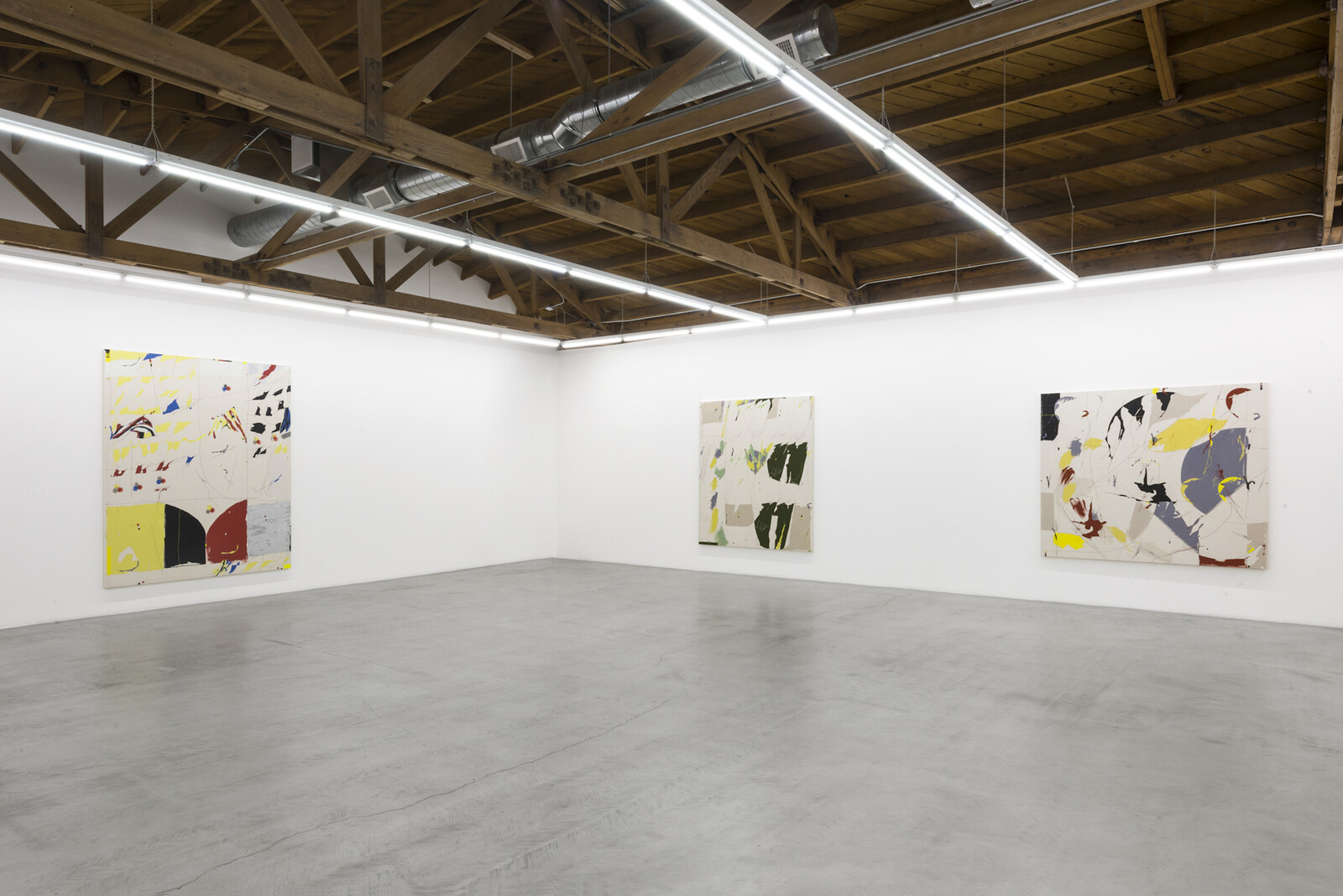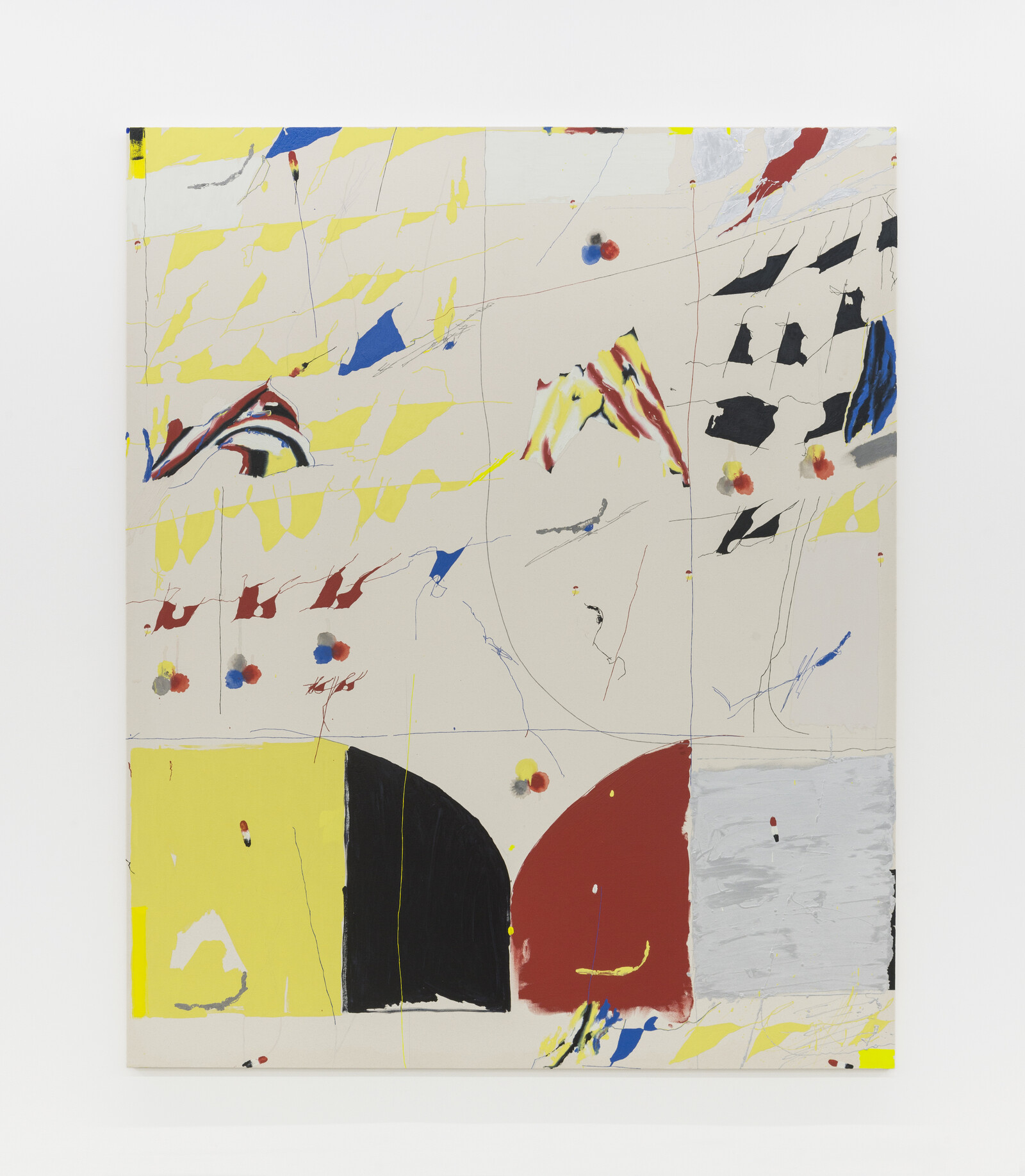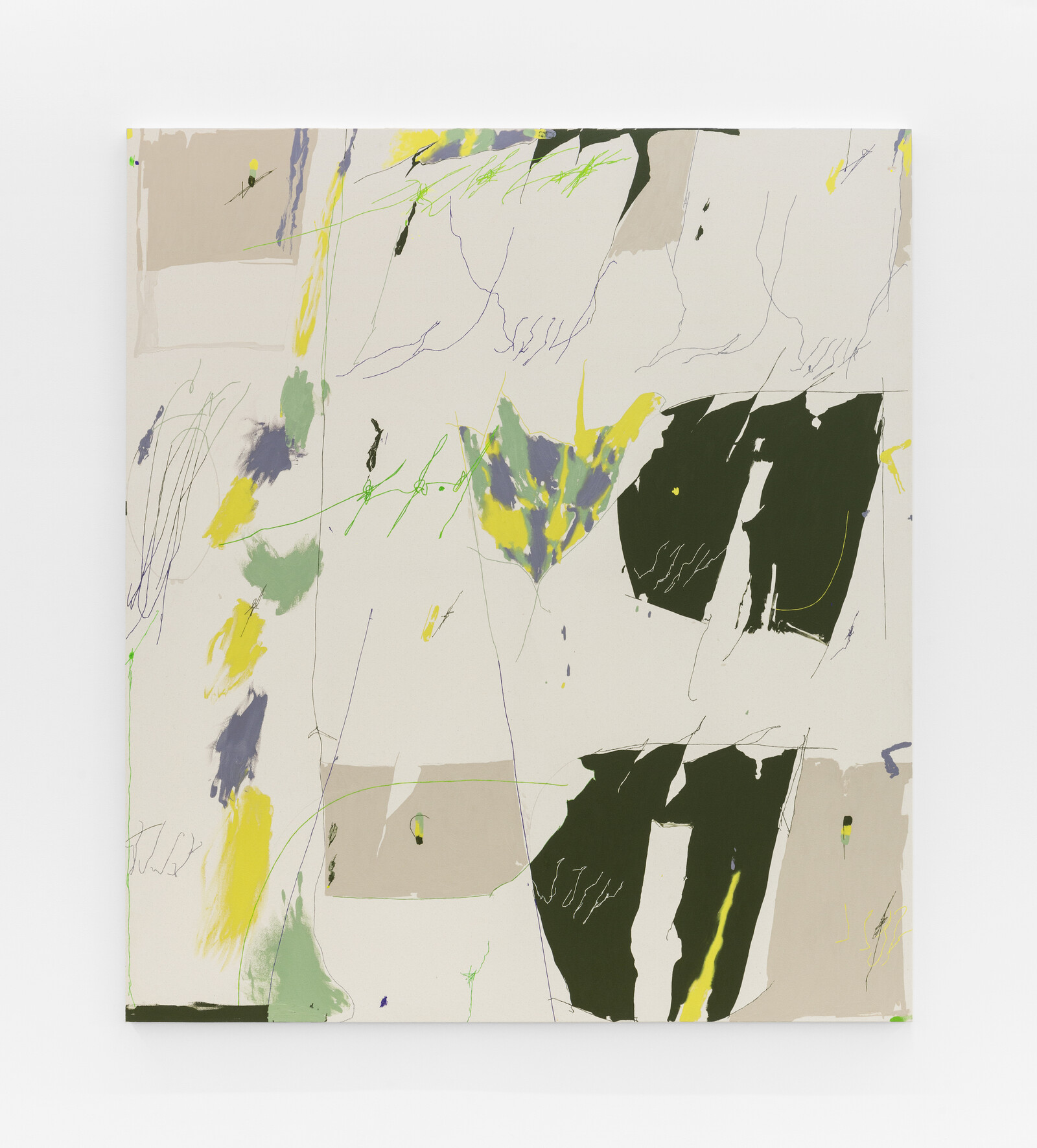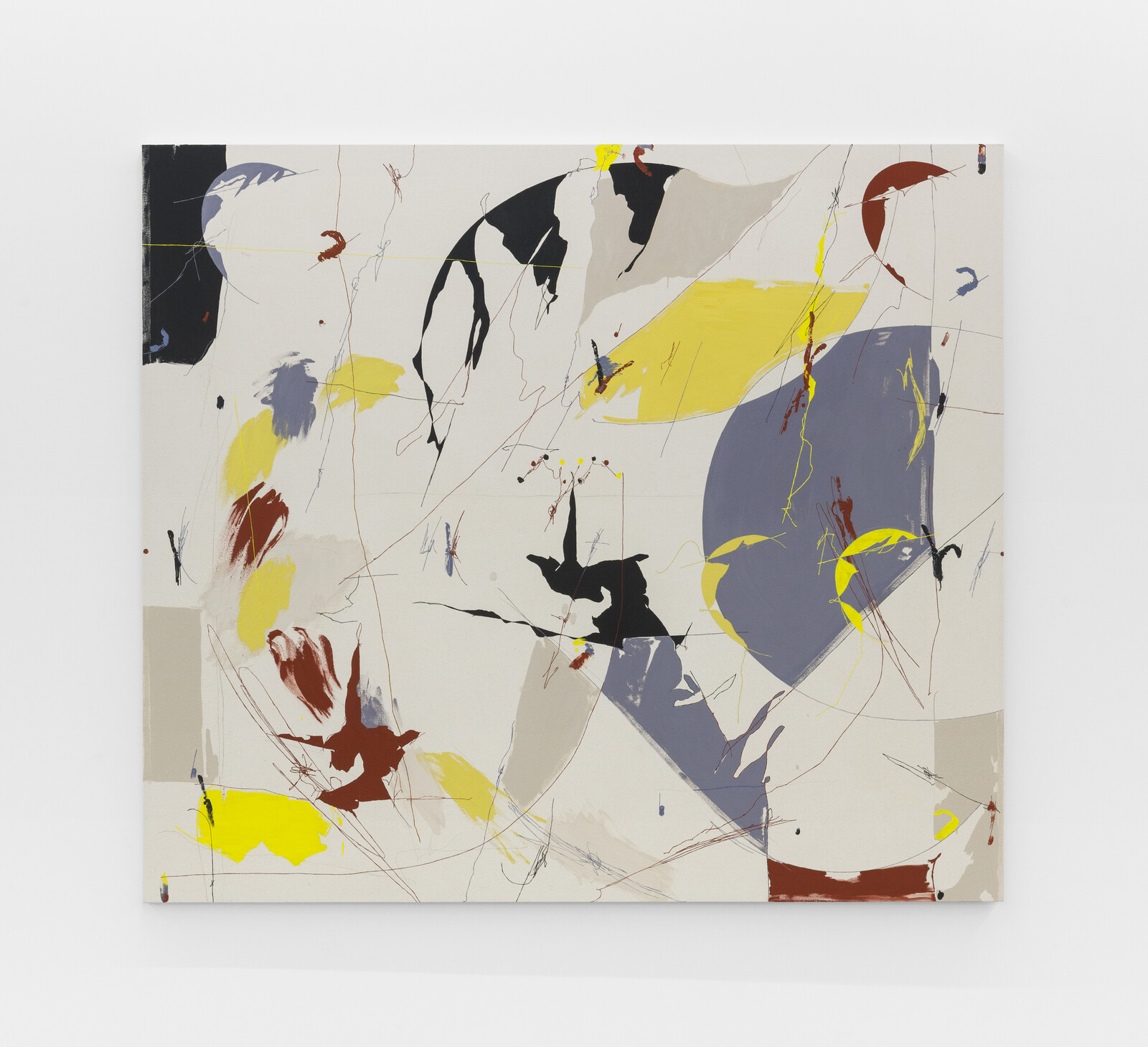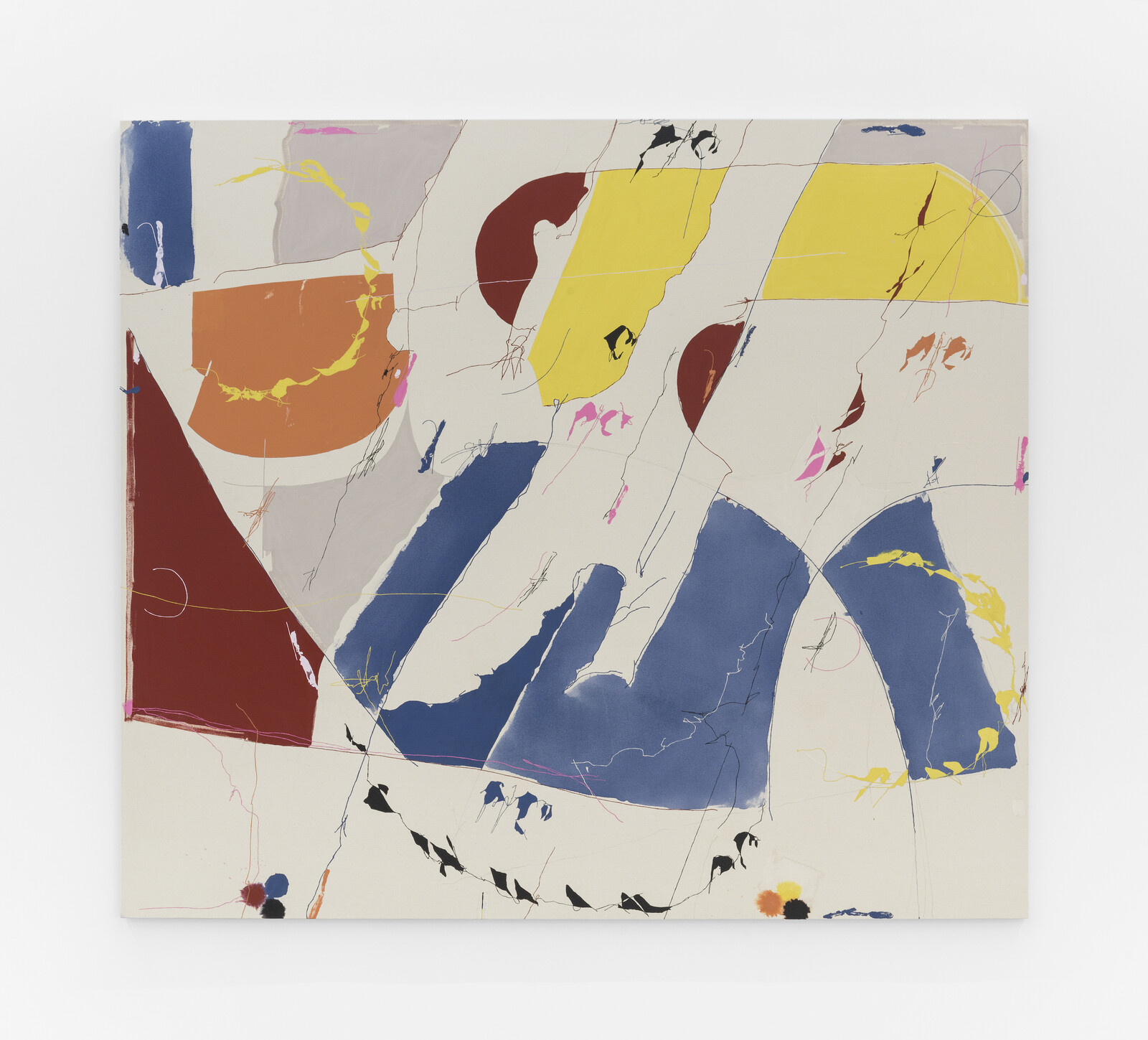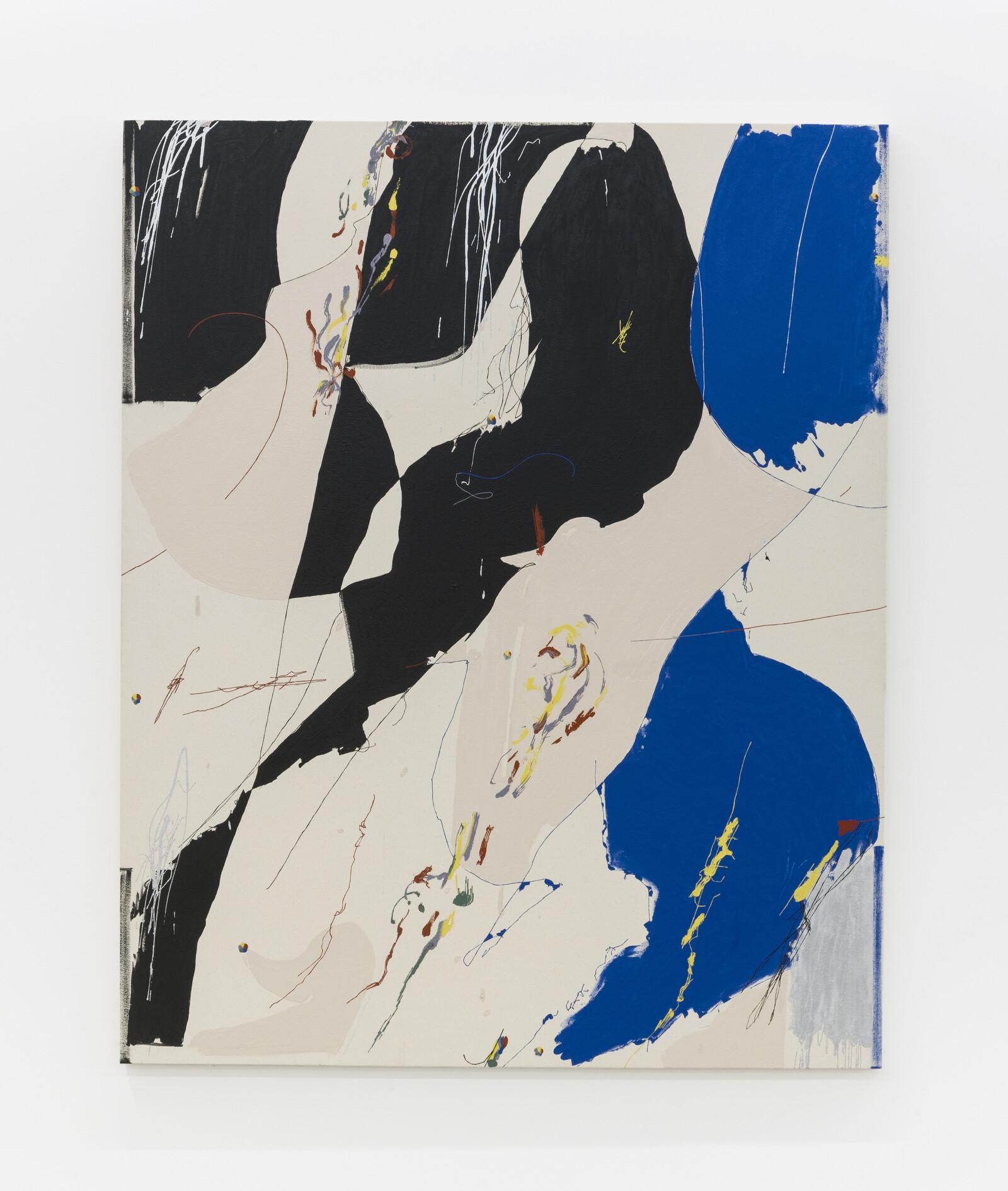I cannot stop thinking about the quality of Maysha Mohamedi’s facture. There are a number of different styles of brushstroke—or, perhaps more accurately, applications of paint—deployed in Mohamedi’s first solo show at Parrasch Heijnen, but, in particular, there is one type of line, thin and febrile, that struck me as completely original. It’s unusual to discover something like this in contemporary abstract painting; young artists are inevitably rearranging, for the most part—sometimes brilliantly—familiar, anthologized marks. There is a sense that only a finite quantity of maneuvers are possible when it comes to the meeting of pigment and surface. Here is a line, however, rendered in oil with a minute brush, that denies the sumptuousness of the medium. A line that, in effect, does what oil paint does not want to do: it creeps anxiously across a spare ground, it does not fatten, grow tumid with thinner, or spill blearily beyond itself. As if responding to my scrutiny, this line appears—on each canvas applied at different frequencies—to jump like the reading of a seismometer’s jittery needle during a series of minor earthquakes, or, in other places, to accumulate like a loose mass of Silly String. I think of Joan Mitchell, her brambles of strokes; of Brice Marden’s “Cold Mountain” calligraphies; of Cy Twombly’s looping graffiti—but Mitchell’s marks converge in intentionally wretched, expressionistic accretions; Marden’s in meditative, organic patterns; Twombly’s in automatic, tautological, illegible phrases. Where the line is concerned, none are Mohamedi’s forebears.
This quality of line, however, is hardly the only arresting feature at play within this series of eight paintings (seven large, one small) on view in “Sacred Witness Sacred Menace.” Though there is clear aesthetic coherence across Mohamedi’s individual canvases, each derives from a distinct source: a primary-colored rocket ship-themed playground in Ojai that Mohamedi visits with her children gives Honey Vertigo (all works 2021) its palette and its board-game-like construction; a teenagehood trauma from a run-in at a small-town fairground is the impetus for Head Up in the Clouds like Zeus and its collection of vaguely sinister, erotic shapes, and black, flag-like forms that recall torn industrial plastic or Tyvek. The recent Givenchy Spring collection designed by Matthew M. Williams inspired Accrued Merccy. Vintage cookbooks and food magazines, rife with faded lithographic hues, likewise serve Mohamedi as she begins to build her discrete color worlds. Aloe Cuts is informed by such source material: the dull periwinkle of a linoleum tabletop, the artificial food coloring used to key up the pistachio green of a layered Neapolitan cake, the nearly-white beige of a ceramic dinner plate. But more on that nearly-white beige, or cream, or neutral, or off-white, or whatever you want to call the color of a canvas that has been painted to resemble itself. This camouflage is perhaps Mohamedi’s primary intervention. This color, or non-color, whose presence reads as lacuna rather than substance—the raw canvas, say, that we associate with the Color Field painters of the fifties and sixties with whom Mohamedi’s work does share affinities—is an act of subtle artifice she employs agilely across the series.
I am reminded of a group of recent Vincent Fecteau sculptures for which the artist outsourced the fabrication of the underlying structures in order to expedite his creative process. These structures were enlarged, 3D-printed reproductions of smaller maquettes made of Fecteau’s usual mix of found and handicraft materials. The reproductions were routed from a dense, margarine-colored foam, and though Fecteau would go on to cover these in layer upon layer of papier mâché and paint, his first move was to blanket the models in an identical shade of margarine yellow: a color no one would see, but that would nonetheless definitively grant him ownership of their forms. With her careful mixing of creamy neutrals, Mohamedi takes this question of ownership a step further: these shades of off-white (some rosier, some cooler) are not just her ground but her correction fluid, allowing her to dabble in erasure, to make a move, and then retreat. These imperfectly erased passages ghost forth, the phantom limbs of previous thoughts, and tussle with her collection of colored shapes.
And though Mohamedi’s marmoreal neutrals command the most real estate within a given painting, the barely bridled farragoes of color (swathes, daubs, smears, handprints, lines) still take ultimate command of her compositions. There is a logic not just to how the color coalesces but to how her forms iterate and build, repeating and distorting until a liquid cadence is achieved. At Home in the World of Men, a particularly strong painting, exchanges some of the bittier, bunting-like shards of color that populate several other works for monolithic cascades of black and blue. Aptly, given the title, Clyfford Still and Robert Motherwell come to mind—in particular, the latter’s iconic black circles wedged between imposing black columns. It’s almost as if Mohamedi has taken a Motherwell painting, ripped it up, and reconfigured it: some of its geometries remain, but on her own terms. Witness how the edge of a large, voluptuous cobalt form in the bottom righthand corner of the canvas is stretched by her fingertips, as if her hand had been trapped in nylon, yearned for liberation, and then finally broken free. These same fingertips, dipped in the primary color palette of Honey Vertigo, dance antically up the composition, a testament to the playfulness and seriousness, trauma and pleasure, that can, in fact, coexist within a frame.
